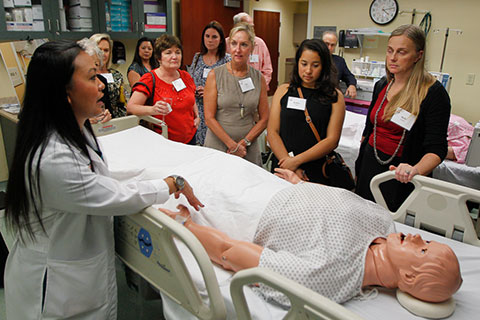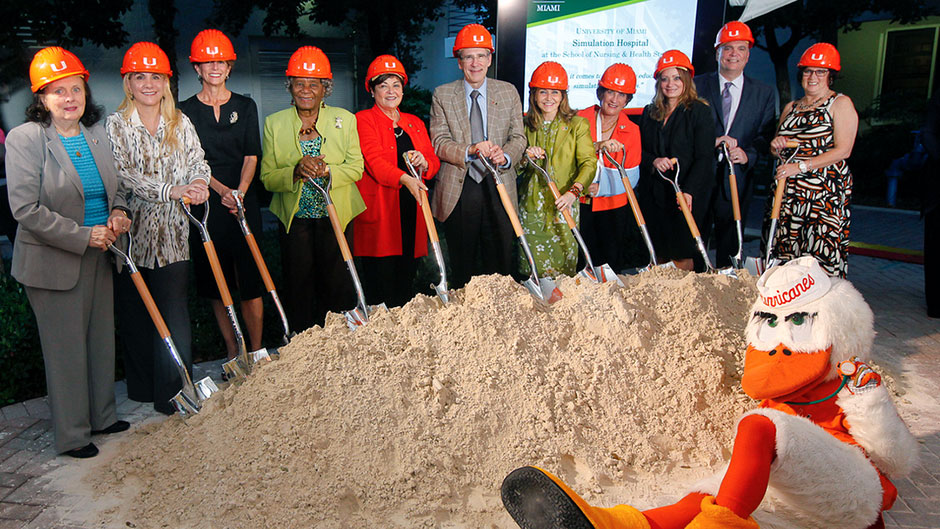In hosting the groundbreaking ceremony for its 41,000-square foot Simulation Hospital on Thursday night, the University of Miami’s School of Nursing and Health Studies officially kicked off the largest endeavor in its 67-year history. When it opens in 2017 as one of the nation’s first education-based destination centers for simulation immersion, the hospital will transform health care education while igniting a paradigm shift in patient safety outcomes.
“The hospital will be a unique resource to train those who share our passion for caring for others, as we all know that simulation saves lives,” said Pamela J. Garrison, co-chair of the Simulation Hospital fundraising campaign and retired nurse who spearheaded a matching gift program with her late partner, R. Kirk Landon.
The Simulation Hospital will be equipped with all of the tools housed in the world’s most advanced clinical and home health care settings. Susana Barroso, director of operations for the school’s International Academy for Clinical Simulation and Research, presented a virtual tour of the hospital’s rooms, suites, and units where students, nurses, physicians, and other health care professionals will work in teams to “treat” standardized patients and high-fidelity simulators while learning the clinical and communication skills needed to prevent medical errors.
“Simulation provides students with the ‘fight or flight’ ambiance in a safe, controlled teaching environment without risking the life of a real patient,” said Luis Diaz-Paez, B.S.N ’15, a recent graduate who is a registered nurse at Jackson Memorial Hospital. “Because of simulation, I am confident and feel prepared to care for critically ill patients in the emergency department.”
 Dean Nena Peragallo Montano noted that in addition to dramatically increasing its current simulation experiences for students, the Simulation Hospital will greatly enhance the school’s outreach and service to the professional health care community. The hospital will offer a variety of simulation courses, needs assessment services, and a beta testing site for medical devices and equipment.
Dean Nena Peragallo Montano noted that in addition to dramatically increasing its current simulation experiences for students, the Simulation Hospital will greatly enhance the school’s outreach and service to the professional health care community. The hospital will offer a variety of simulation courses, needs assessment services, and a beta testing site for medical devices and equipment.
“And of course,” Dean Peragallo Montano continued, “I want to remind everyone that our Simulation Hospital campaign is still ongoing, and we have lots of naming opportunities.”
UM President Julio Frenk, a physician and former minister of health in Mexico, stressed the important role the Simulation Hospital will play in engaging student nurses and doctors in critical interprofessional communication.
“This will be a great way to bring together our two health sciences schools—the Miller School of Medicine and the School of Nursing and Health Studies,” Frenk said. “Something I’ve heard from both ends of the Metrorail is that this will shorten the distance between our two campuses. Having this state-of-the-art facility will be a key to advancing our global mission in health education.”
The school commemorated this historic milestone with a festive reception where students, faculty, staff, clinical partners, and friends enjoyed medical-themed hors d’oeuvres and attended tours of the International Academy for Clinical Simulation and Research in the M. Christine Schwartz Center for Nursing and Health Studies.

